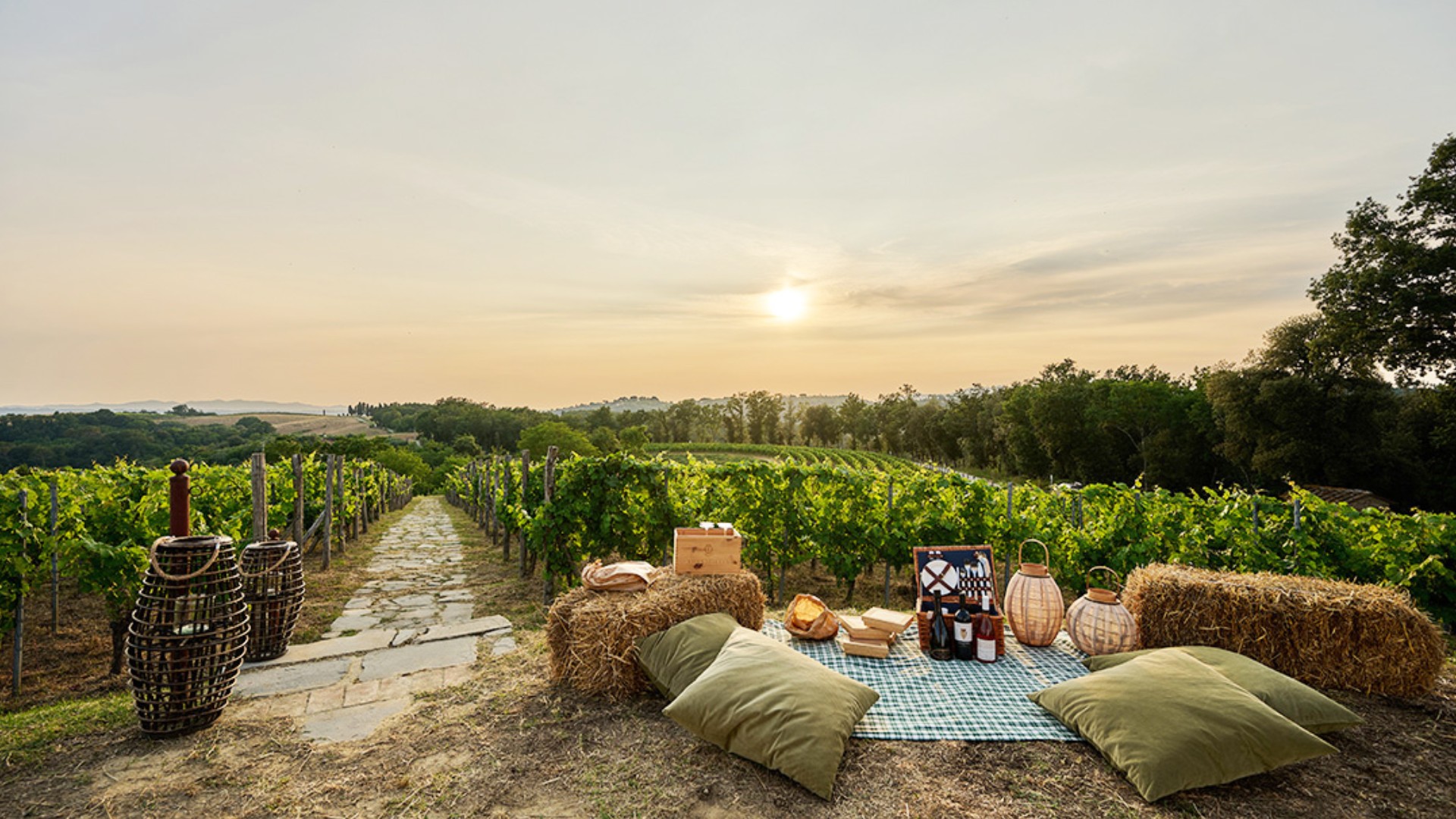Poached pears, celeriac-crème fraiche puree, glazed root vegetables, spiced plum wine jus
Growing up in Michigan, a sort of right of passage into adulthood was duck hunting with my grandfather, father, and uncles. Rule number one when hunting is you always eat what you shoot. Growing up we ate a lot of duck, pheasant, and quail. Although I don’t do much hunting these days living in Bali, duck is still one of my favourite things to cook and eat. There’s nothing better than enjoying a confit duck leg on a cold Autumn evening except for the recipe that follows.
Wine Pairing Recommendation
I love a great French Pinot Noir with roasted duck such as Gevry Chambertin which would pair perfectly, however, if you want to go a little bit bolder a Chateau Neuf du Pape would pair nicely as well.
Dark Duck Stock
Equipment Needed:
Ingredients
Procedure:
- Pre-heat a still oven to 170 degrees Celsius.
- In a large mixing bowl combine the duck bones, chicken wings, vegetables, garlic, and ginger.
- Coat with oil, toss and spread out evenly on the roasting pan.
- Place in the oven and roast until golden brown.
- Add the tomato paste on the bones and continue to roast for 5-10 minutes.
- Remove the roasting pan from the oven and tilt out any excess fat.
- Transfer the bones and veggies to the pot and place the roasting pan back in the oven with the white wine.
- With a wooden spoon scrape the fond from the bottom of the roasting pan.
- Pour the fond over the duck bones in the pot.
- Add the water to the pot covering the bones by no more than 10cm.
- Place the pot on the stove over medium heat and bring up to a simmer.
- Reduce the heat to medium-low and with the ladle skim the scum off of the top of the top of the stock.
- Add the thyme sprigs, bay leaves and peppercorns. Continue to cook over low medium flame for 2.5-3 hours skimming the scum as needed. Being careful not to reduce the stock more than to the top of the bone level (maximum).
- Remove from the heat and strain into a container through the fine mesh sieve.
- Ice down the stock to cool rapidly, skimming the layer of fat off the top of the stock.
- Once cooled, cover with plastic wrap with a slight vent, and place in the fridge until the stock has gelatinized.
- The next day, with a metal spoon, gently lift the top fat layer off the duck stock.
Spiced Plum Wine Duck Jus
Equipment Needed:
Ingredients
Procedure:
- In a heavy bottom pot warm the vegetable oil and butter over medium heat.
- Add the onions, celery and shallots and sauté until soft with the wooden spoon.
- Add the garlic, ginger and green chilies, continue to sauté until almost caramelized.
- Add half of the thyme sprigs, rosemary, bay leaves, and dried spices, continue to saute for two minutes.
- Add the sugar and give it a quick sauté.
- Add the plum wine and reduce by half over medium-high heat.
- Add the dark duck stock, bring up to a simmer, reduce the heat to medium low and begin to reduce.
- With the ladle skim the scum from the top of the sauce and discard. Continue this step throughout the reduction process to maximise clarity in the final sauce.
- Once the duck stock has reduced by half, remove from the heat and push through the china cap with the ladle into a new clean heavy bottom pot.
- Place back on the stove over medium-low heat and continue to reduce and skim the scum until nape* consistency is reached.
- *Nape consistency is achieved when you can turn the back of the spoon over and swipe your finger through the sauce with a coating consistency.
- Season to taste and remove from the heat and pass through the fine mesh strainer.
- Ice down and chill until ready to serve.
- Once ready to serve, bring up to a simmer, reduce if needed for a thicker consistency based on personal preferences.
- Just before serving slowly stir in the cold butter to give the sauce a silky smooth texture.
Seven Spice Gunpowder
Equipment Needed:
Ingredients
Procedure
- Crush the pink peppercorns rough with the side of your chef’s knife on the cutting board and set aside.
- Place the sauté pan on the gram scale and zero it out.
- Add the cinnamon sticks, coriander seeds, star anise, cloves, and juniper berries to measurement.
- Remove the sauté pan from the scale and place on the stove top over low heat.
- Toast the spices slightly until they wake up and become aromatic. Do not burn the spices.
- Remove from the heat and let cool to room temperature.
- Transfer to a spice grinder and grind semi-fine using a pulsing method.
- Transfer the ground spices to a mason jar and add the crushed pink peppercorns and ground ginger powder.
- Place the lid on the jar and give it a good shake to combine thoroughly.
- Store the spices in the jar in a cool dark place until ready to use. Note this is a great spice mix that can be used for many applications such as venison, quail, squab, and even chicken legs.
Plum Wine Poached Pears
Equipment Needed:
Ingredients
Procedure
- In a heavy bottom pot combine the water, plum wine, sugar, honey, ginger, cinnamon sticks, star anise and cloves.
- Place on the stove over low-medium heat, stirring occasionally until the sugar is dissolved.
- Add the orange peel, thyme, and rosemary, let simmer on low for five minutes to extract flavour.
- Gently slide the pears into the poaching liquid and cover with a piece of parchment paper with a hole cut into the centre.
- After about 10-25 minutes, check to see if the pears are knife tender yet still firm.
- Remove from the poaching liquid with the slotted spoon and transfer to a baking dish for cooling.
- Meanwhile reduce the poaching liquid by half to intensify the flavour.
- Remove from heat and transfer to a container to cool and ice down.
- Once the poaching liquid has completely cooled, pour back over the pears, cover with plastic wrap and store in the fridge until ready to serve.
Celeriac-Crème Fraiche Puree
Equipment Needed:
Ingredients
Procedure
- With a knife remove the outer part of the celeriac and cut into medium cubes. Place in a bowl with water and lemon juice to hold.
- With a vegetable peeler, remove the skin from the potatoes and cut into slightly larger cubes than the celeriac. Combine with celeriac in water with lemon juice.
- Strain off the water from the celeriac and potatoes and transfer them to the heavy bottom pot.
- Cover with milk, add the thyme, bay leaf and a little bit of salt. Place on the stove over medium heat. Bring up to a simmer and cook until the celeriac is knife tender.
- Remove from the heat, strain and remove the thyme and bay leaf. Transfer to a food processor.
- In a separate small pot warm the cream and set aside.
- Add the butter and crème fraiche to the celeriac-potato mix in the food processor and begin to process smooth.
- Slowly drizzle in the hot cream to achieve the desired consistency. I like my puree a little bit loose, because after the next step the starches will slightly thicken it up.
- Once the mixture is pureed season to taste with salt and white pepper.
- Transfer to a small hole strainer and push through with a ladle to remove any lumps.
- Hold Hot until ready to serve.
Roasted Root Vegetables
Equipment Needed:
Ingredients
Procedure (Beetroot)
- Preheat oven to 180 degrees Celsius.
- Wash the beetroots and place in the mixing bowl with picked rosemary, orange peel and olive oil. Season to taste with salt and freshly cracked black pepper.
- Cover with aluminium foil and place in the oven for 20-35 minutes depending on how big the beetroots are.
- Once the beetroot is cooked and tender, remove from the heat, remove the foil and pour the orange juice over the top to sizzle and steam in the hot pan. Let the beetroot cool in these juices.
- Once cool, gently peel back the skin of the beetroot and cut to ½ golf ball size if there is inconsistency in size of the various beetroots.
- Reserve room temperature until ready to use or refrigerate covered if you are prepping a day in advance.
Procedure (Heirloom Carrots)
- Wash the carrots under cool water and scrub with the green side of a brand-new sponge to remove any dirt.
- Place in a cold bowl of water and with a paring knife tourney the top of the baby carrot pulling up along the stem leaving the stem intact.
- Trim the stem about 2-3cm from the top of the carrot and any thin straggly part from the bottom of the carrot
- Place in the same mixing bowl as the beetroot and combine with thyme, extra virgin olive oil, salt, pepper and espelette chilies. Toss and transfer to roasting pan and place in the oven at 180 degrees Celsius for 10 minutes.
- Remove from the oven and set aside until ready to serve.
Preparing the final dish
Additional Ingredients Needed
Equipment Needed
Step by Step
- Score the skin of the duck breast several times with a sharp knife.
- Season both sides of the duck breast with salt and freshly cracked black pepper.
- Sprinkle the Seven Spice Gunpowder evenly on the flesh side of the duck breast.
- In a cold sauté pan place the duck breast skin side down over low flame to begin rendering the duck fat.
- Meanwhile in a small sauce pot heat the sauce, add the butter, and adjust seasoning to taste- reserve.
- In another small sauce pot heat the celeriac puree, adjust seasoning if need be and reserve.
- When the fat on the duck breast has rendered, transfer the entire pan skin side down to the oven and roast until an internal temperature of 60 degrees Celsius.
- Remove from the oven and let rest skin side down on the cutting board.
- Lightly toss the poached pear in olive oil and char grill to warm up. Remove once this is achieved.
- Meanwhile in another sauté pan warm a little bit of butter with water and a pinch of salt.
- Add the roasted beetroot and begin to warm up.
- Add the roasted baby carrots to the beet root, warm and season to taste with salt and white pepper.
- (All of the mis en place is ready to plate at this time)
- Begin plating by swiping a semi-circle of celeriac puree on the plate.
- Neatly arrange the beetroots, baby carrots, and grilled pear on top of the celeriac puree.
- Quick blanch the fiddle head ferns in the boiling water to take the chill off. Arrange as garnish with the vegetables.
- Very important step: Once the duck breast is well rested, with a sharp knife cut down the centre of the breast into two equal halves. Place on the plate off centre of the vegetable assembly.
- Nape with the plum wine just.
- Sprinkle a little bit more seven spice gunpowder on the duck breast and the plate as garnish.
- Sprinkle a little rock salt on the cut side of the duck breast for texture.
- Lastly garnish with edible flowers and nasturtium.








